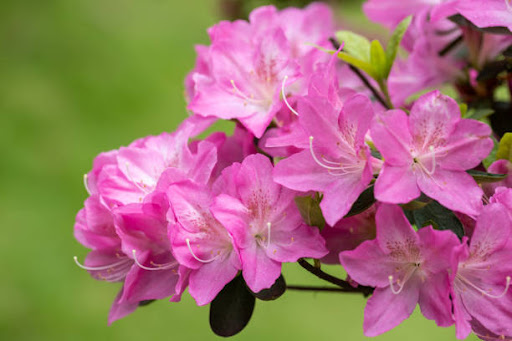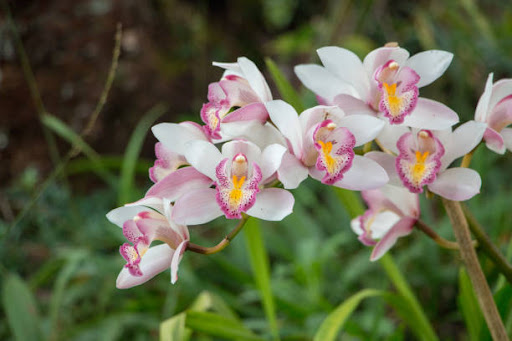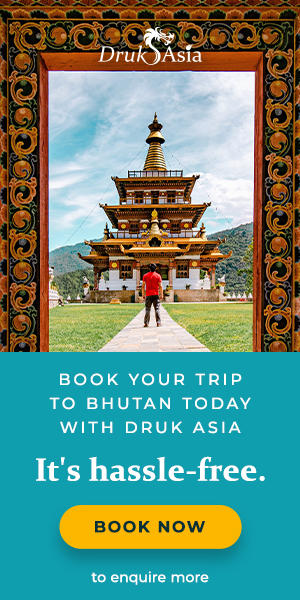The three most popular flowers in Bhutan
One of these flowers can only be found above 3,700m above sea level.

When you think of Bhutan, you think of vibrant colours. From their costumes to their arts, crafts, and festivals, Bhutan is bathed in lively hues. But it does not stop there because there is a whole world of colourful flora on top of their colourful culture.
Bhutan has pristine forest cover; more than 51% of the country is protected land. So you bet they have some gorgeous flowers to boot.
Of their rich vegetation, there are three flowers that stand out from the rest.
Himalayan Blue Poppy

The blue poppy is the national flower of Bhutan.
The flower is sometimes referred to as the “blue yeti of Bhutan”, due to its rarity. It grows at an elevation of 3,700 to 4,300 metres above sea level—yes, you’ll have to climb that high for a sighting, and yes, it is very cold up there. The blue poppy can survive extreme conditions, such as freezing weather.
They are spectacular; their stunning blue petals will have you mesmerised. There are many species of blue poppy—13 can be found in Bhutan—but only the bright blue species is unique to the country.
There was a time when one particular blue poppy species, the Meconopsis napaulensis, could be found all over Chelela Pass in Paro. Sadly, according to the Royal Society for the Protection of Nature, they are now scarce. The society blames this depletion on the plundering by people from neighbouring districts, who help themselves to the flowers, leaving behind small holes where the flowers used to be.
As a result of the irresponsible behaviour, this species is at risk of extinction from the area. Lay people can’t tell between the different species, so they just assume it’s a blue poppy from its colour, but you can actually differentiate the different types of the blue poppy from the shape of its leaves, the seed pod, or the filament.
To see a blue poppy, you’re going to have to do some trekking. They can be found in Haa, Merak, and Sakteng during the blooming period of late May to June. One place to enjoy the flower is Laya village.
Rhododendrons

There are approximately 49 species of rhododendrons in Bhutan.
This includes the rare Rhododendron pogonophyllum species. A Scottish plant collector named George Sherriff was the first person to record this elusive flower on 7th June 1937, at Wangdue Phodrang.
The Bhutanese love the rhododendron, regarding it as a symbol of pure and divine beauty. You can tell this from the way they feature the flower in their art and songs.
Bhutan even has a Rhododendron Festival, which aims to celebrate the rhododendron flower. The event is held for three days every May at the Royal Botanical Park in Lamperi. The festival features a rhododendron garden walk, as well as a display of the local culture, cuisine, arts and crafts, traditional games, cultural programmes, guided walks, and other activities. You’ll get to enjoy the different species of rhododendrons at full bloom in their natural habitat.
You may find rhododendron flowers all over Bhutan, from the city to the countryside. Many temples and monasteries grow the flowers in their compounds.
If you wish, the road approaching Mongar spots beautiful green pastures dotted with the bloom of rhododendrons.
Alternatively, stop to admire the rhododendron flowers on the road to Taschichho Dzong at the edge of Thimphu.
The blooming season of the rhododendrons in Bhutan lasts from April to July. Some species bloom earlier than the rest, and some finish a few weeks after the others.
Orchid

There are 17,500 species of orchids in the world, and 100 to 400 are being discovered every year. In Bhutan alone, there are 487 species of (recorded) orchids, one of the richest orchid habitats in the world. Out of this large number, 82 species of orchids are endemic to the country.
In 2020, Bhutan recorded two new orchid species, the Chiloschista densiflora and Chiloschista himalaica.
Chiloschista densiflora has yellowish flowers with brown spots and a dense flowered inflorescences, which gave it its name. It can be found in Trongsa and Zhemgang.
Meanwhile, the Chiloschista himalaica was named after its original habitat in the Himalayas. This species is found in Chhukha, Haa, Samdrupjongkhar, and Zhemgang.
Through the establishment of Tse-rim orchid Sanctuary at Rimchu in Punakha, Bhutan has spearheaded efforts to conserve wild orchids.
Furthermore, a species called Cymbidium hookerianum (referred to locally as Ola Choto), is a delicacy in Bhutanese cuisine.
The chairman of Orchid Specialist Group, Mr. Udai C. Pradhan, thinks that Bhutan’s wide habitat of orchids can provide jobs for the youth of Bhutan. For one, they could use seed and tissue culture to produce orchid plantlets, the seedlings of which are then distributed to the youth, who can then utilise it for commercial purposes.
Thus, this strategy would not just conserve the species, but also the mother of many hybrids, and promote culinary specialities that can attract tourists throughout the year.
Thus you don’t just get to admire the flowers with your eyes. Now, you get to eat them too!




